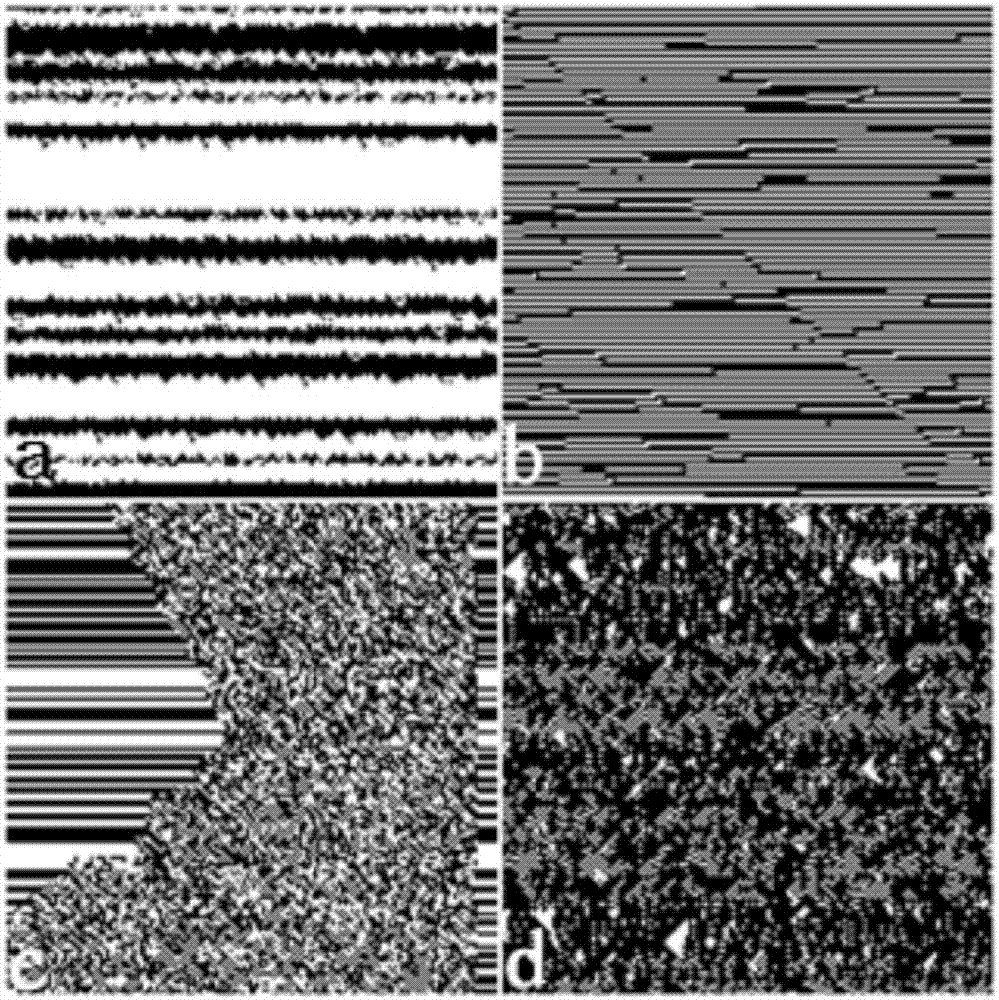Two-dimensional cellular automaton evolution rule classification method
A cellular automata, two-dimensional cellular technology, applied in computer parts, instruments, characters, and pattern recognition, etc., can solve the problem of reducing the number of evolution rules, unable to complete non-additive evolution rule classification processing, and inconsistency of evolution rules. It belongs to the stable type and other problems, and achieves the effect of improving accuracy, low universality, and high classification accuracy.
- Summary
- Abstract
- Description
- Claims
- Application Information
AI Technical Summary
Problems solved by technology
Method used
Image
Examples
Embodiment
[0050] In this embodiment, the size of the two-dimensional cell space is 200×200, and the number of evolution time steps (system operation steps) of the evolution rule is 400 steps. "1" is used to represent the state of the raw cell, and "0" is represented as The dead cell state neighbor model is VonNeumann, and the domain radius is set to 5. The settings of each threshold are: α=0.90, β=0.18, χ=0.5, δ=0.8. The two-dimensional cellular automaton numbers are classified from 1 to 1,000,000 evolution rules, and the classification method of the present invention is used to complete the classification, and the percentage of each type accounting for the total number of 1,000,000 is counted, as shown in Table 1 below:
[0051] Table 1 Proportion of evolution rules of four types of two-dimensional cellular automata
[0052]
[0053]
[0054] In Table 1, among the evolution rules of two-dimensional cellular automata, the stable type and the periodic type account for more than ha...
PUM
 Login to View More
Login to View More Abstract
Description
Claims
Application Information
 Login to View More
Login to View More - R&D
- Intellectual Property
- Life Sciences
- Materials
- Tech Scout
- Unparalleled Data Quality
- Higher Quality Content
- 60% Fewer Hallucinations
Browse by: Latest US Patents, China's latest patents, Technical Efficacy Thesaurus, Application Domain, Technology Topic, Popular Technical Reports.
© 2025 PatSnap. All rights reserved.Legal|Privacy policy|Modern Slavery Act Transparency Statement|Sitemap|About US| Contact US: help@patsnap.com



